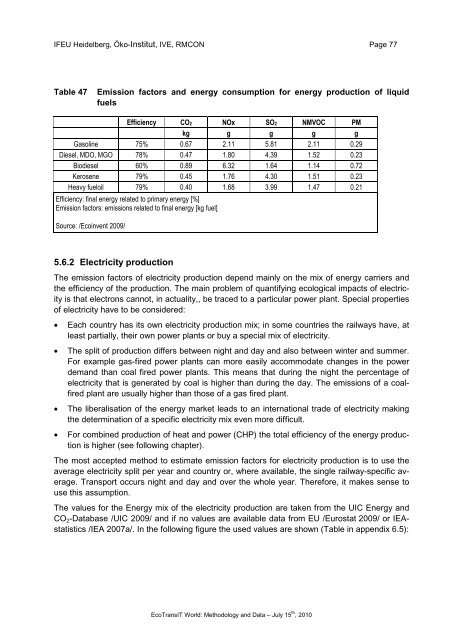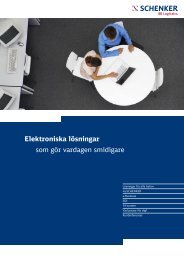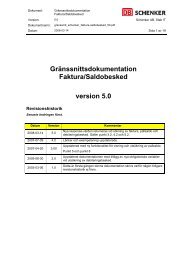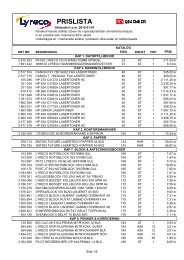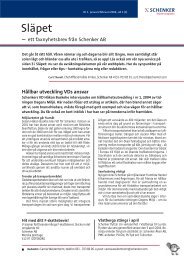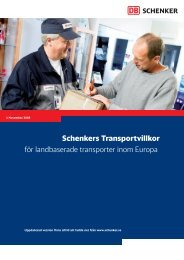Ecological Transport Information Tool for Worldwide ... - Schenker
Ecological Transport Information Tool for Worldwide ... - Schenker
Ecological Transport Information Tool for Worldwide ... - Schenker
Create successful ePaper yourself
Turn your PDF publications into a flip-book with our unique Google optimized e-Paper software.
IFEU Heidelberg, Öko-Institut, IVE, RMCON Page 77<br />
Table 47<br />
Emission factors and energy consumption <strong>for</strong> energy production of liquid<br />
fuels<br />
Efficiency CO2 NOx SO2 NMVOC PM<br />
kg g g g g<br />
Gasoline 75% 0.67 2.11 5.81 2.11 0.29<br />
Diesel, MDO, MGO 78% 0.47 1.80 4.39 1.52 0.23<br />
Biodiesel 60% 0.89 6.32 1.64 1.14 0.72<br />
Kerosene 79% 0.45 1.76 4.30 1.51 0.23<br />
Heavy fueloil 79% 0.40 1.68 3.99 1.47 0.21<br />
Efficiency: final energy related to primary energy [%]<br />
Emission factors: emissions related to final energy [kg fuel]<br />
Source: /Ecoinvent 2009/<br />
5.6.2 Electricity production<br />
The emission factors of electricity production depend mainly on the mix of energy carriers and<br />
the efficiency of the production. The main problem of quantifying ecological impacts of electricity<br />
is that electrons cannot, in actuality,, be traced to a particular power plant. Special properties<br />
of electricity have to be considered:<br />
• Each country has its own electricity production mix; in some countries the railways have, at<br />
least partially, their own power plants or buy a special mix of electricity.<br />
• The split of production differs between night and day and also between winter and summer.<br />
For example gas-fired power plants can more easily accommodate changes in the power<br />
demand than coal fired power plants. This means that during the night the percentage of<br />
electricity that is generated by coal is higher than during the day. The emissions of a coalfired<br />
plant are usually higher than those of a gas fired plant.<br />
• The liberalisation of the energy market leads to an international trade of electricity making<br />
the determination of a specific electricity mix even more difficult.<br />
• For combined production of heat and power (CHP) the total efficiency of the energy production<br />
is higher (see following chapter).<br />
The most accepted method to estimate emission factors <strong>for</strong> electricity production is to use the<br />
average electricity split per year and country or, where available, the single railway-specific average.<br />
<strong>Transport</strong> occurs night and day and over the whole year. There<strong>for</strong>e, it makes sense to<br />
use this assumption.<br />
The values <strong>for</strong> the Energy mix of the electricity production are taken from the UIC Energy and<br />
CO 2 -Database /UIC 2009/ and if no values are available data from EU /Eurostat 2009/ or IEAstatistics<br />
/IEA 2007a/. In the following figure the used values are shown (Table in appendix 6.5):<br />
EcoTransIT World: Methodology and Data – July 15 th , 2010


